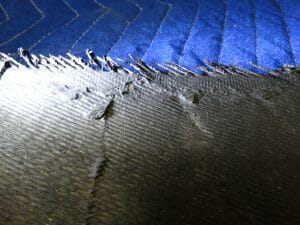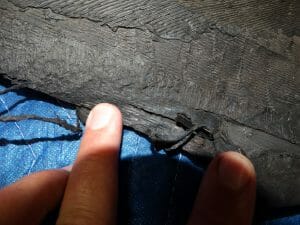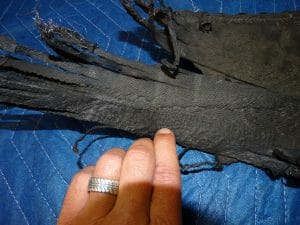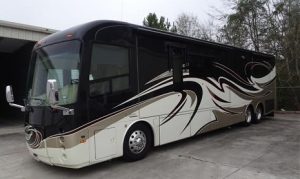 An RV owner noticed that his RV was pulling to the right. He stopped at a retail shop of the large tire manufacturer. The tire shop provided an alignment and recommended a tire rotation, moving the right front tire to the rear of the RV and the rear tire to the front of the RV. A few months after this rotation, the owner was on a trip in Arizona when the left front tire blew out. Thankfully the occupants were unharmed, but the tire failure led to more than $150,000 in damages. Our tire expert, was retained to conduct a tire failure analysis.
An RV owner noticed that his RV was pulling to the right. He stopped at a retail shop of the large tire manufacturer. The tire shop provided an alignment and recommended a tire rotation, moving the right front tire to the rear of the RV and the rear tire to the front of the RV. A few months after this rotation, the owner was on a trip in Arizona when the left front tire blew out. Thankfully the occupants were unharmed, but the tire failure led to more than $150,000 in damages. Our tire expert, was retained to conduct a tire failure analysis.
CASE BACKGROUND
A tire failure occurred on Interstate 10 in Arizona causing thousands of dollars in damage to a 2014 Aspire Entegra Coach recreation vehicle (RV). The driver was heading westbound on Interstate 10 when the left front steer tire failed. Once the tire failed, the vehicle was pulled left of center across the roadway where the driver was able to bring the RV to a controlled stop.
PRIOR MAINTENANCE
Five months prior, the Aspire RV was taken in for an alignment at a tire service shop affiliated with a large tire manufacturer. During the visit the Aspire RV had an alignment performed, and it was noted that the right front tire had increased wear on the outside shoulder. The service personnel recommended rotating the right front tire to the rear position to even out the treadwear. The Aspire RV had 21,553 miles on the odometer at the time of the service. According to the tire shop invoice, this rotation was completed between the right steer tire and the right front outer tires. The rotation occurred even though the steer axle tires were a different size compared to the tires on the second and third axles tires.
DAMAGE DUE TO TIRE FAILURE
- Left front with the electrical compartment door opened.
- Left front of the Aspire RV with the failed left front steer tire. The black scuffs on the body panels were consistent with the tire hitting the body as it flew apart.
- Closer view of the electrical compartment with tire fragments present and the rearward compartment torn open.
The Aspire RV electrical compartment that housed the electrical panel with the various fuses was located just forward of the left front wheel well. When the left front tire failure occurred, it was very violent. The tire fragments damaged the electrical compartment. Additionally, the floor tiles within the cabin were cracked from the tire impacting the underside of the floor.
The failed left front tire was sent to the tire manufacturer for evaluation. After inspection of the tire, they stated that the tire had failed due to over deflection. Over deflection can be caused by underinflation or overloading of a tire.
TIRE FAILURE ANALYSIS & CONCLUSIONS
- Left front steer tire
- Closer view of left front steer tire. Although blurred purposely to protect identifying information, the DOT code was obtained from the tire wall.
The left front tire was no longer available for inspection. However, our expert was able to complete the tire failure analysis by analyzing 30 digital photographs of the RV and failed left front steer tire and conducting a thorough inspection of the RV.
FINDINGS INDICATE INSTALLATION DEFECT
- Based on DOT code on the tire wall, the left front tire was approximately 3.9 years old at the time of the failure. Additionally, the DOT code of the front tires on the Aspire RV at the time of the inspection were the same as the subject left front tire (minus the date code).
- The right side tire (size 275/80R22.5) that was rotated to the right front steer position by the tire shop should not have been installed on the front steer axle. It was the incorrect size and was not the recommended 295/80R22.5 size for the front steer axle. It was smaller in width, smaller in diameter, had a smaller static radius and had a lower load carrying capacity. This was an installation defect (see table below).

- The 275/80R22.5 tire that was installed on the right front steer position at the time of the left front steer tire failure had both shoulders worn with reduced tread depth. This was consistent with a tire that was overloaded. This tire was overloaded because it was a smaller diameter and had a lower than required load carrying capacity.
- With the larger tire (size 295/80R22.5) installed on the left steer position and the smaller tire (size 275/80R22.5) installed on the right steer position; the front of the Aspire RV would have been leaning to the right side with ultimately more load. The footprint pressure distribution of the left front steer tire would have shifted to the right as well. In simple terms, the inboard side of the left steer tire footprint was loaded more than the outboard side of the footprint (i.e. increased negative camber). This would have increased heat and deflection on the inboard side of the left front steer tire.
- The left front steer tire failure was consistent with being caused by the installation error completed by the tire service shop.
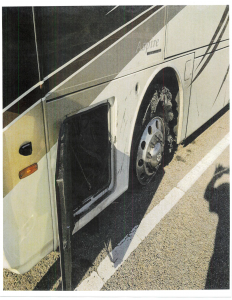
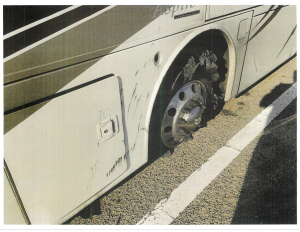
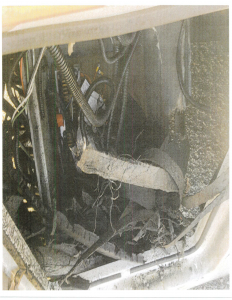
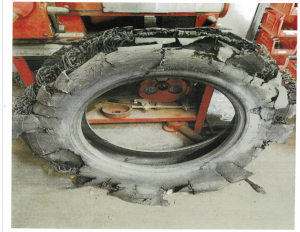
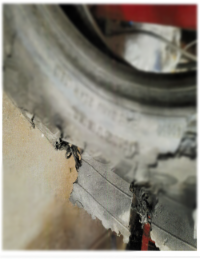
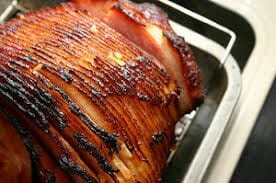 Most of us have heard the story about the person cutting off both ends of the ham before baking a holiday dinner. When asked why, the response was, “Because that’s how we’ve always done it.” Later you find out that great, great grandmother’s pan was too small forcing her to cut off the ends of the ham so that it would fit in the pan. Generations later, the ham is still being chopped off on both ends. As forensic engineers, we are called to seek answers to the question “why?” Why did something fail? Why did the accident occur? And sometimes, “Why has it always been done this way?”
Most of us have heard the story about the person cutting off both ends of the ham before baking a holiday dinner. When asked why, the response was, “Because that’s how we’ve always done it.” Later you find out that great, great grandmother’s pan was too small forcing her to cut off the ends of the ham so that it would fit in the pan. Generations later, the ham is still being chopped off on both ends. As forensic engineers, we are called to seek answers to the question “why?” Why did something fail? Why did the accident occur? And sometimes, “Why has it always been done this way?”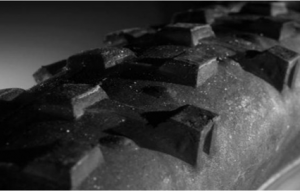 Our tire expert was called out to examine the right front tire of a tractor trailer due to a tread separation. Fortunately, the tire stayed inflated (100+psi), and the driver was able to bring the big rig to a controlled stop. When our engineer interviewed the shop owner, they stated that they have had a contract with this tractor trailer manufacturer for more than three years. Our expert learned that since the start of the contract, the shop has reported having 27 front tire failures on 36 of this popular brand of tractor trailer.
Our tire expert was called out to examine the right front tire of a tractor trailer due to a tread separation. Fortunately, the tire stayed inflated (100+psi), and the driver was able to bring the big rig to a controlled stop. When our engineer interviewed the shop owner, they stated that they have had a contract with this tractor trailer manufacturer for more than three years. Our expert learned that since the start of the contract, the shop has reported having 27 front tire failures on 36 of this popular brand of tractor trailer.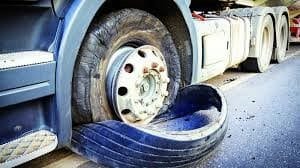 The inspection of the tire failure indicated that the tire had been overloaded/under-inflated. Our expert interviewed the driver of the tractor trailer and the head mechanic of this trucking manufacturer. Both stated that they check tire inflation at least twice a day and set pressure to 110 psi.
The inspection of the tire failure indicated that the tire had been overloaded/under-inflated. Our expert interviewed the driver of the tractor trailer and the head mechanic of this trucking manufacturer. Both stated that they check tire inflation at least twice a day and set pressure to 110 psi.
